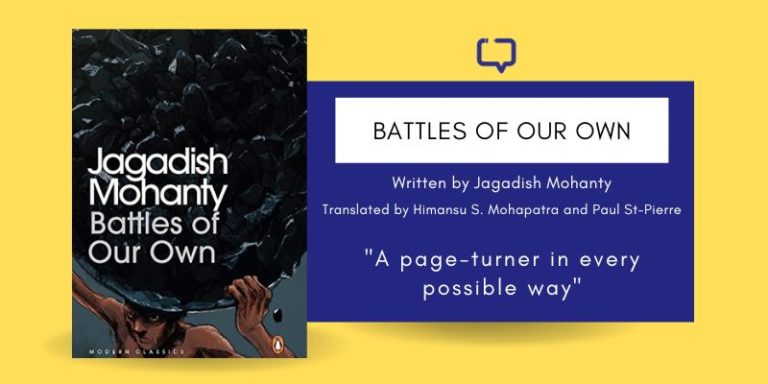Satyarth Pandita reviews Ashis Dutta’s Gandhi and the London Cabby (Published by The Write Order, 2023)
The book Gandhi And The London Cabby is a set of ten short stories by author Ashis Dutta that transport readers to various captivating settings. These tales lead you through the bustling streets of London, take you on journeys along the challenging uphill roads of the Himalayas, and guide you along the picturesque Mediterranean shorelines of Tel Aviv.
Additionally, the narrative traverses the avenues and trains of France, provides glimpses of life in an ashram nestled in the forests of the Kumaon Himalayas, and even offers a thrilling bus ride amidst a thunderstorm with frightful lightning.
Ashis Dutta’s World of Stories
The first story, “Gandhi and the London Cabby,” unfolds in the year 1997. The author takes the readers on a journey through the rainy streets of London from the comfort of a cab’s back seat. What begins as a casual conversation between the author and the cabby soon transforms into a political discussion, each of them holding contrasting viewpoints.
We encourage you to buy books from a local bookstore. If that is not possible, please use the links on the page and support us. Thank you.
Towards the latter part of the narrative, the author is left bewildered as the cabby astonishingly claims that Gandhi had been a passenger in his cab just the other day. This unexpected revelation leaves a lasting impression on the author, and it lingers in the readers’ minds right up until the story’s final lines have been devoured.
In “Silent Gharwal,” the author narrates his journey through the Gharwal Mountains of the Himalayas in an old Ambassador car. The story is rich in visual imagery and sounds, vividly painting a picture of the landscapes and the mysterious encounter with a sanyasi.
“A Pilgrimage…Not Mine…?” recounts the author’s stay in Tel Aviv and a trip to Jerusalem and Bethlehem, taking readers to the route where Jesus was condemned to crucifixion.
“Ordeal in Odarna” recounts a teenage episode from the author’s past, involving a journey with nine cousins and their maternal uncle in an Ambassador car for a picnic in Odarna Valley. As they reached a clearing where the car tracks concluded, they stumbled upon several pugmarks that hinted at potential dangers in the forest. During their retreat, they narrowly avoided a potentially fatal accident with another car, only to discover later that the vehicle was being driven by someone they knew.
“Where to Hide Rumi” chronicles an incident that occurred in the aftermath of the tragic World Trade Center attack. The author found himself in France, strolling through its streets and metro stations with a book in his hand dedicated to the life of Jalaluddin Rumi. In the wake of the attack, the world was keenly aware of the threat posed by terrorists. During a telephonic conversation, one of the author’s acquaintances had inquired about the term ‘Jihadis.’
Love Short Stories? We recommend Boats on Land, a short story collection by Janice Pariat
The book he held in his hand had an ornate cover adorned with intricate Arabic calligraphy, which drew attention to itself. This design made him feel apprehensive and watchful of any prying eyes in this tense post-9/11 environment. In an attempt to avoid unwanted attention and potential misunderstandings, he sought refuge in what he initially mistook for a fashion magazine. Unbeknownst to him at the time, this publication that now concealed the book on Jalaluddin Rumi had a cover featuring the bare torso of a topless model, which in France did not raise eyebrows.
“Zafran” (Saffron), which translates to ‘Kong’ in Kashmiri, is a narrative set in the early 2000s. The story provides a glimpse of Kashmir’s beauty while highlighting underlying tensions. In this narrative, the author and his family ventured to Kashmir, fully aware of the ongoing turmoil in the region. The author skillfully weaves a story of disconcerting encounters that leave an indelible mark on the reader’s psyche. Their car is halted by an army officer who curiously requests their passports, prompting the author to assert their Indian identity.
To Ashis Dutta’s astonishment and dismay, the army personnel informed them that their driver, Shabbir Ahmed, who had been accompanying them for the past few days, had reported them as foreigners to the army. This unexpected revelation left the author bewildered. The unsettling theme of mistaken identity continued when they encountered a similar incident with the owner of the houseboat they were staying in.
The owner asked them if they were from India, further highlighting the deep-seated animosity that some Kashmiri Muslims held towards non-Muslims from India. These encounters cast a shadow over what was supposed to be a journey to the ‘Paradise on Earth.’ The story’s brilliance lies in its ability to evoke empathy and introspection. It presents not only the raw beauty of Kashmir but also the undercurrents of tension that mar the experience.
“The Run” is set in the late 1980s and starts with the author taking a train to Tanakpur, where he is accompanied by a man to an ashram built high up on the Kumaon Mountains. Throughout the story, the author skillfully paints a vivid picture of the landscapes, the winding roads, the local people, and every detail of his surroundings, immersing the readers in the very essence of the place.
The title, “The Run,” alludes to the moment in the story when the author awakens one morning, realising he is running late for breakfast. He rushes from his quarters to another ashram where breakfast is being served. However, as he finally reaches the dining table, exhaustion overtakes him, causing him to faint. In the haze of his unconsciousness, he faintly recalls the words of a swami: “Take it easy.”
When he regains consciousness, the head swami inquires about the rush, prompting the author to provide various explanations and reasons. In response, the head swami simply retorts, “So what?” This seemingly simple yet profound question forces the author to contemplate a vital aspect of life that leads a person towards enlightenment and wisdom, ultimately embodying the essence of “The Buddha.”

In the narrative of “Paula And My Frankfurt Sojourn,” the author transports the readers to Germany during the early 1990s. During this period, the author finds lodging in a woman’s residence, arranged through a central agency that facilitated accommodations in the homes of local families for visitors. The story delves into the author’s experiences both within and outside the house, as well as his interactions with the homeowner, Paula.
“Framed in Time” narrates the journey of an 18-year-old author who leaves his hometown of Kolkata for a small, distant town. From the perspective of this young narrator, the story highlights how the rain, once a familiar and comforting presence in his hometown, takes on an ominous and unfamiliar character in this new environment. The narrative skillfully exposes the fears and uncertainties of a young boy living away from home for the first time, much like the sudden emergence of water after a heavy downpour.
While the initial purpose of the visit was to consult a specific doctor in connection with the establishment of an outreach health centre in his grandmother’s ancestral village, the story deviates from this objective. Instead, it meanders into different avenues, introducing new characters whose contributions to the narrative remain minimal. At times, the plot appears to wander aimlessly, leading the readers astray from the central theme.
In “Gulf of Pride,” the author recounts an encounter with two individuals who are embarking on a journey to the Gulf as laborers. The story emphasizes the significance of self-respect and pride, particularly when a steward addresses one of the laborers in a rude and disrespectful manner. In response, the laborer asserts that the steward should make requests rather than give orders, as it is he who has paid for the tickets, asserting his own dignity and autonomy.
Fact V/s Fiction
Many of the stories in the book have the feel of episodes from Ashis Dutta’s life as if they’ve been moulded into stories. In such stories, it appears that the author’s fascination with a particular event led him to weave it into a narrative, possibly with the intention of creating a remarkable impact. However, in reality, these attempts often fall short of achieving any significant effect. While the claim from the book’s back cover that “these characters…move and talk in front of our eyes” certainly rings true, there are instances where the revelations at the end may lack conviction.
In some stories, the narrative threads appear weak, but they are compensated for by Ashis Dutta’s impeccable language and writing style, which keep the reader engaged. It seems as if Ashis Dutta is a close friend, and the book reads like a reunion after a long separation, with Ashis Dutta sharing anecdotes, adventures, and episodes from his extensive travels.
The stories are presented in a way that makes it feel like the author is sitting beside us, providing intricate details about his journeys. His choice of words and the manner in which he writes or speaks act like a magnet, drawing readers or listeners in and keeping them captivated, often oblivious to their surroundings.
Favourite Quote from the book
“Anyone who has been half a bookworm would know the pang of losing a book. And throwing away a half-read book for some unknown fear is like abandoning a child just because the neighbour does not like its cries.”
Ashis Dutta in Gandhi and the London Cabby
Have you read this captivating set of ten stories? What do you think of it? Drop a comment below and let us know!






















One Response
The writeup is quite engaging and succinct .